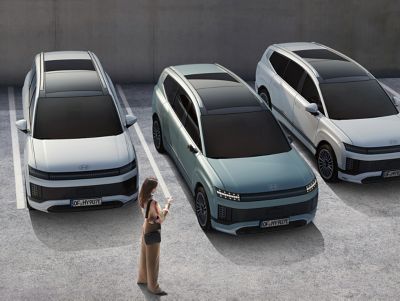Hyundai Smart Sense.
With Hyundai Smart Sense, our cutting-edge Advanced Driver Assistance Systems, you have a comprehensive range of the very latest safety and driving assist features available to you for added peace of mind. The following glossary will help you to find out more about the various features.
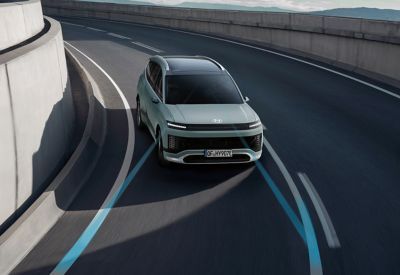
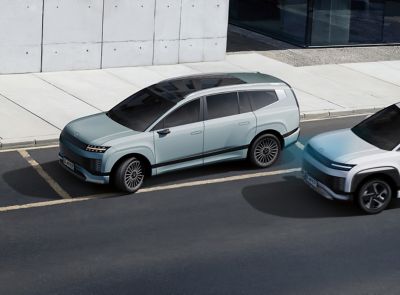
Driving Safety.
Forward Collision-Avoidance Assist (FCA).
Enjoy the safety of automatic braking to help avoid collisions. FCA stops your car fast, even if you’re distracted. Utilising radar and/ or the front camera, the system scans the road ahead and alerts you to slowing or stopped vehicles, cyclists or pedestrians in your path – and automatically applies full braking power if you don’t react in time. (Basic Function)
Forward Collision Assist City / Interurban / Pedestrian / Cyclist (FCA-Ped) & (FCA-Cyc).
When the car ahead abruptly brakes and evasive lane change is sensed as impossible, it applies brakes at a faster tempo (relative to the previous versions of FCA-Car) to dramatically reduce the likelihood of a forward collision.
Junction Turning (FCA 1.5 - JT).
FCA-JT detects the oncoming car from the other side when turning left at a junction and, if a collision appears likely, applies the brakes to stop the car. Whereas the existing FCA only protected the driver against forward collisions, FCA-JT expands the range of protection to include collisions at junctions.
Direct Oncoming (FCA 1.5 - DO).
FCA-DO detects the direct oncoming car and, if a collision appears likely, applies the brakes to stop the car. Whereas the existing FCA only protected the driver against forward collisions, FCA-DO expands the range of protection to include with an oncoming vehicle from the opposite side of the driving path.
Junction Crossing (FCA 2 - JC).
Senses sideways-approaching vehicles at intersections and junctions and automatically assists with emergency braking if there is a risk of collision.
Lane Change Oncoming (FCA 2 - LO).
When overtaking on roads that have two or more lanes, FCA-LO automatically assists with avoidance steering if there is a risk of collision with an oncoming vehicle.
Lane Change Side Lane (FCA 2 - LS).
FCA-LS works to prevent accidents by intervening with emergency steering assist. When a collision in the lane-change side appears likely, FCA-LS takes over and steers the vehicle to the car’s original position.
This automatic steering intervention does not occur if there are other cars, pedestrians, or cyclists in the vicinity that can cause secondary accidents. In this event, FCA-LS just displays a warning, stopping short of making active interventions.
Forward Collision-Avoidance Assist with Evasive Steering Assist (FCA 2 - ESA).
The kinds of forward collisions are very diverse, but certainly one of the most common causes is a sudden reduction of speed from the car ahead. Another cause is abrupt braking or speed reduction from a cyclist on the edge of the lane. Whenever these obstacles occur, the driver’s natural response is to steer to the (hopefully) empty side lane, but a collision may occur if the driver does not steer quickly or strongly enough.
FCA w/ ESA adds strength to such emergency steering by the driver while avoiding a forward collision with other cars, pedestrians, or cyclists. Whereas the existing FCA only managed to reduce speed in the event of a likely collision, FCA w/ ESA acts more proactively by assisting the steering.
Blind-Spot Collision-Avoidance Assist (BCA-R).
Evolution of BCW: Blind-Spot Collision-Avoidance Assist (BCA) is a driving convenience and safety system that prevents the vehicle from colliding into vehicles in the adjacent lane or coming from behind when the driver switches lanes by warning the driver and controlling the vehicle.
Blind-Spot Collision-Avoidance Assist (BCA-R) Drive.
BCA uses its front view camera and front and rear corner radars to compute the relative position and speed of other vehicles on the side or in the blind-spot zone of the vehicle. If it believes the vehicle will collide with other vehicles, the system warns the driver with visual and audible alarms while automatically assists steering (evasive steering) if the risk of a collision is detected (assisted steering is not performed if there is a risk of secondary collision with nearby vehicle, cyclist or pedestrian due to the evasive steering).
Blind-Spot Collision-Avoidance Assist (BCA-R) Park.
When leaving a roadside parking lot from the car’s parallel-parked position, most drivers check the surroundings to make sure that the entry into the roadway is safe. Particularly dangerous is a car approaching from the backside, so the drivers often pay the most attention to the side mirrors and, if applicable, the car’s blind-spot warning features. Despite these precautionary measures, the danger of an accident is of course still present. Colliding with a fast-approaching car from the backside is the nightmare of all drivers who leave the roadside lot
Comparing to the entry functions of BCA, the enhanced version expands its function to include the above parking exit scenario.
Blind-Spot View Monitor (BVM).
When a turn signal is used, the view of that side of your Hyundai is shown in the centre cluster for top visibility and zero blind spots.
It also enhances visibility in dark and rainy conditions.
Combination wit SVM (Surround View Monitor) mandatory.
High Beam Assist (HBA).
Detects vehicles and automatically switches to low beam. When no more vehicles are detected, it reactivates the high beams, maximising your range of vision.
Safe Exit Assist (SEA).
Detects vehicles approaching from behind, warns you and temporarily locks first and second-row doors, so passengers can only exit when it is safe.
When the radar notices a car coming, the rear door automatically locks to prevent the potential collision. More simply put, when the driver attempts to unlock the electronic child lock, the system delays the unlocking process, simultaneously placing a pop-up message on the dashboard and locking the door along with an alarm sound.
Beyond just this situation, SEA also activates when the first-row and the second-row passengers attempt to open the car door as a car approaches from the rear-side. A dashboard pop-up and alarm sound similarly help the passengers notice the incoming danger. This function is active for ten minutes even after the car is shut off, only deactivating when the smart key locks the door from the outside.
Intelligent Speed Limit Assist (ISLA).
Reads traffic signs using the front camera and warns if you are driving over the speed limit. Adjusts speed in combination with Smart Cruise Control to match the speed limit when activated.
Warns the driver:
- when driving faster than the speed limit (warning default ON)
- when there is a new speed limit (warning can be set to OFF)
Vehicles uses map information in combination with the sign information recognized by the front camera.
Driver Attention Warning (DAW).
DAW analyses the driver’s attention level while driving. Provides a warning when signs of driver inattentiveness are detected, and recommends a rest if needed.
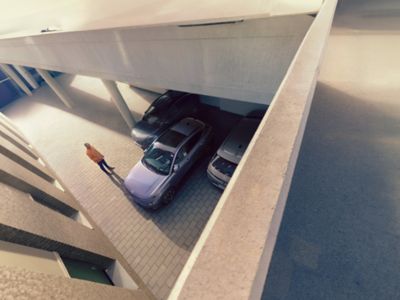

Driving Convenience.
Lane Following Assist (LFA).
When activated, it keeps the car centered in its lane at speeds up to 200 km/h on motorways and city streets.
Evolution of LDW & LKA : LKA intervenes with the steering precisely at the moment when lane drifting is about to occur; on the other hand, LFA constantly attempts to keep the vehicle at the center of the lane.
Indeed, LFA becomes active when the vehicle is a mere 30 centimeters off the center, so it is nearly constantly active; now compare that to LKA, which is only active when the drifting is happening. That’s why LFA is allowed a much wider range control than is LKA.
Lane Following Assist (LFA2).
LFA2 includes Hands-on-detection (HOD) sensor for improved hands on/off detection and lane centering performance. HOD enables better LFA capability by changing the logic of the autonomous driving controller and improves steering control performance by changing the steering actuator control method from Torque Control (LFA) to Steering Angle Control (LFA2).
Highway Driving Assist (HDA).
HDA maintains a set speed and distance from the vehicle ahead when driving on highways and helps centre the vehicle in the lane, even through a curve.
HDA combines the core advantages of NSCC and Lane Following Assist (LFA) System to make highway driving drastically more convenient. The function automatically activates when the SCC is turned on and the navigation understands the car to be driving on a highway.
HDA uses the information from the forward-facing camera and radar sensor as well as the navigation data to control the speed, direction, and following distance of the vehicle. In essence, it adds to the NSCC’s function the advantages of LFA, which keeps the vehicle’s center at the center of the lane.
Highway Driving Assist II (HDA II).
As well as maintaining the set speed, following distance, and position at the center of the lane, HDA II detects and reacts to other cars entering the lane. HDA II will automatically decelerate to quickly regain the desired following distance.
HDA-II also comes with a new feature called Lane-edge Driving: when a vehicle by the side drifts and comes too close, the feature activates and moves the vehicle to the opposite edge of the lane, keeping it there as long as the danger of collision exists.
Highway Driving Assist (HDA II w/HOD).
HDA II with Hands-on Detection (HOD) includes a sensor for improved hands on/off detection, lane centering, lane change and steering control performance. It changes the steering actuator control method from Torque Control (HDA-II) to Steering Angle Control (HDA-II w/ HOD).
Smart Cruise Control (SCC).
More safety and less stress. Smart Cruise Control maintains a distance to the vehicle ahead and a speed set by the driver. If a slower vehicle appears ahead, it automatically adjusts the speed while maintaining the distance.
Smart Cruise Control with Stop & Go (SCC w/Stop & Go).
When equipped with Stop & Go, SCC can put your vehicle back in motion after it has stopped. If the vehicle ahead stops, the SCC will stop until the sensors detect the preceding vehicle move again. Very useful in congested traffic.
Smart Cruise Control 2 w/ Emergency Stop (SCC2).
If the driver is recognized unresponsive (because the hands are off the wheel or the driver is not looking forward), SCC2 maintains the center of the lane and stops in the lane through deceleration control. Warnings are given inside and outside the car.
Smart Cruise Control-Machine Learning (SCC-ML).
SCC-ML uses machine learning to recognize your driving style. It then actively seeks to match it while in cruise control mode by adapting the distance to the vehicle ahead.
Navigation-based Smart Cruise Control-Curve (NSCC-C).1
The Curve function (NSCC-C) uses navigation data to predict incoming curves on the road, reduces the cruising speed, and, upon exiting the curve, returns the speed to the preset level.
Rear Occupant Alert (ROA).
ROA perceives occupants in the rear seats and reminds the driver when they exit the vehicle so that nobody is accidentally forgotten, even sleeping kids or pets.
Rear Seat Alert.
If movement has been detected in the rear seats, the driver is notified when they open the door: a dashboard message pops up to “check the rear seats” along with an audio message.
ROA Sensor.
If the driver ignores these messages and locks the vehicle from the outside, ultrasonic sensors on the ceiling automatically start to monitor indoor movement for 24 hours. If movement is detected, the driver is notified in three ways: car honks alarms and flashes emergency lights for 25 seconds; if equipped with Bluelink, a reminder is delivered to cellular devices.
ROA Radar.
The newest ROA system uses high resolution radar sensors. Radars can measure even minute movements of the chest and blood flow of passengers. So the system is sophisticated enough to distinguish adults, infants, and pets.
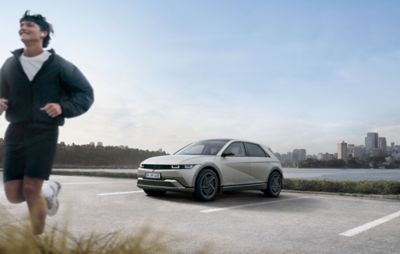
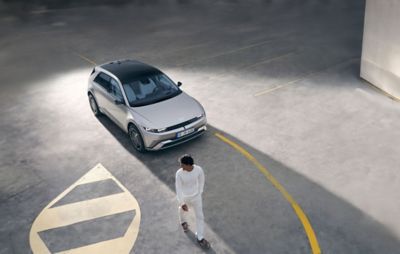
Parking Safety.
Rear View Monitor (RVM).2
For safer parking, the situation in the rear of the vehicle is shown on the centre touchscreen when you shift into R or press the Parking/View button.
Surround View Monitor (SVM).
Tight parking garage? No problem. The surround view monitor gives you a 360-degree view of the area to make manoeuvring confined spaces easy and safer.
Parking Distance Warning (PDW).3
Parking made easier. PDW provides warning to avoid collision with pedestrians and objects around the vehicle while parking or exiting. Warns the distance to pedestrians or objects close to the vehicle in 3 levels.
Parking Distance Warning-Forward/Side/Reverse (PDW-F/S/R) uses front, rear and side radars to detect pedestrians and objects.
Parking Collision-Avoidance Assist Reverse (PCA-R).
When reversing, if pedestrians or objects are detected in the rear and side, the system alerts you of a potential collision and will apply the brakes if a collision is imminent.
Parking Collision-Avoidance Assist-Forward/Side/Reverse (PCA-F/S/R).
PCA-F/S/R uses front, rear and side radars to detect pedestrians and objects when parking or exiting, providing a warning and applying the brakes, if necessary, to avoid a collision.
Rear Cross-Traffic Collision-Avoidance Assist (RCCA).
When reversing out of areas, the system warns you if vehicles are approaching from the side or behind and then assists with emergency braking.
Parking Convenience.
Remote Smart Parking Assist (RSPA).
Now you can remotely back into and drive forward out of a parking spot by pressing the forward/reverse button on the smart key – from outside the vehicle. No need to worry about opening your doors into your neighbor’s car.
With the Entry version of RSPA, you align the car with the parking space, and exit. Once the doors are shut, press the forward/reverse button on the smart key to move the car as desired.
Remote Smart Parking Assist 2 (RSPA 2).
With Full RSPA (RSPA 2), the vehicle can remotely park itself in several positions such as parallel and diagonal to the pavement as well as perpendicularly back into and drive forward out of a parking spot – with you standing outside of the car.
Model Overview
